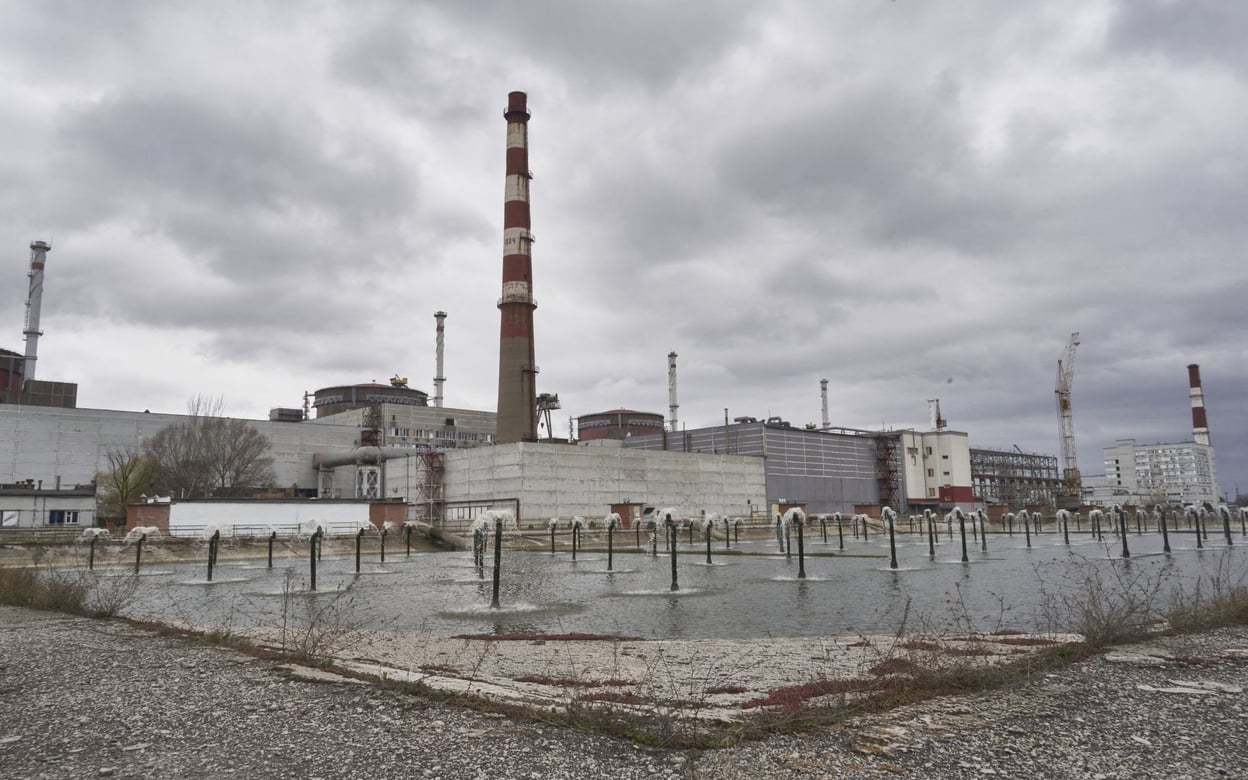“Despite the fact that the Zaporizhzhya NPP has not been producing electricity for several months, it still needs access to water and electricity for cooling and other important conservation and safety functions, as well as to avoid the risk of a potential meltdown of fuel and the release of radioactive material,” — said in a statement from the International Atomic Energy Agency (IAEA) dated June 14, when there was still water in the Kakhovka reservoir.
At the moment, on June 21, the reservoir is already empty, this is confirmed by satellite images. Water from the nearby Zaporizhzhya CHP vent now feeds the ZNPP spray pools, which cool the five shutdown reactors and spent fuel, and keeps the cooling pool filled, largely to compensate for evaporation. The sixth reactor is also being cooled – this is the last reactor that should now be transferred to the "cold shutdown" mode. So far, the Russian side has not done this.
Together, the drain channel and the large cooling pond can provide cooling water for several months, provided they remain intact, the IAEA said in a statement . At the same time, there are serious fears that this condition will not be met: the head of the Main Intelligence Directorate of Ukraine, Kirill Budanov, admits that the threat of an explosion or an accident at the Zaporozhye nuclear power plant exists, since, according to him, the Russian side mined the cooler.
There is no danger until the cooler and spray fountains are destroyed
According to nuclear physicist Andrey Ozharovsky, there is no serious danger for the Zaporizhzhya NPP in the near future until the cooler dam is destroyed and the spray fountains are in operation, which cool the spent nuclear fuel pools – the latter emit heat regardless of the operation of the reactors.

Yes, the inevitable happened after the destruction of the dam of the Kakhovka reservoir – it ceased to exist. The Dnieper flows at a lower level. So far, nothing has changed for the Zaporozhye Nuclear Power Plant. The cooling pond itself, which is separated from the Kakhovka reservoir by a dam, is currently stable. I can draw your attention to IAEA Statement No. 166, which states that in the short to medium term, the cooling pond is stable, and we are talking about months. The IAEA also points out that the cooling pond can be fed not only from the Dnieper, which would require the construction of pumping stations, but also from reservoirs located upstream of the Zaporizhzhya CHPP, which also has a water discharge channel that can be directed to the cooling pond. You can still pump up from the Dnieper, but no one is doing this yet, and this requires construction. It is also possible to receive water by gravity, which is provided for by the existing facilities of the Zaporozhye CHPP. And another way to recharge is artesian wells, but the IAEA writes that it is necessary to check their accuracy and sufficiency.
All attention is now directed to the state of the dam, which separates the cooling reservoir from the already non-existent Kakhovka reservoir. If something happens there, there will be quite serious problems, the cooling pond will be lowered. What can happen there? The same undermining of the dam or inoperability of downstream facilities. If I understand correctly, there are locks there, which are provided for by the project and which drain water from the cooling reservoir. Recently, the question of the possible mining of that same cooling dam has been discussed , and this is disturbing news.
All this is not of paramount importance precisely because the reactors of the Zaporozhye station are stopped and do not generate energy. Most of them are in cold shutdown. The fifth reactor of the fifth unit will now be transferred to a cold shutdown and this means that the cooling pond itself is not so important for residual cooling. What needs to be cooled? Spent nuclear fuel storage pools that generate heat independently of the operation of the reactors. And the reactors themselves are quite warm. All this is done on the basis of spray pools that are not directly connected to the cooling pond. There are cooling systems, these fountains, which can provide cooling for reactors and spent nuclear fuel pools. It can be further discussed whether these spray pools will be destroyed. A nuclear power plant in the center of a military conflict is an extremely dangerous thing, even if this plant is in a state of cold shutdown.
“Problems will arise if someone wants to restart power generation at the ZNPP”
But here it is more likely that problems will arise not for the shutdown reactors, but if suddenly someone wants to restart power generation at the ZNPP. Reactors 1, 2, 3 and 4 depend on the cooling reservoir and without its existence, they cannot be started in any way. For them, this is not a problem, but a real death. These are really old Soviet reactors, very dangerous, which, of course, Ukraine decided to close when they regain control of the station.
The fifth and sixth reactors can be restarted even without a cooling pond, yet they are cooled by cooling towers. But again, these are questions of the distant future, when conditions are created for the launch of a nuclear power plant. Although it is quite possible that Ukraine will choose a nuclear-free scenario – it is much less dangerous and even cheaper to get electricity from renewable sources, use solar and wind energy. I know that such discussions are going on. It is possible that the energy recovery will be based not on nuclear power plants, which are vulnerable to terrorist attacks or military operations, but on renewable energy. Agree, the capture of a solar power plant does not pose any problem for the inhabitants of the country and the environment.


